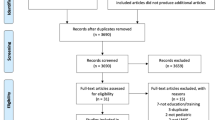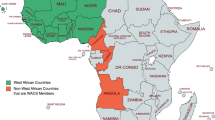Abstract
Background
Trauma is a significant contributor to global disease, and low-income countries disproportionately shoulder this burden. Education and training are critical components in the effort to address the surgical workforce shortage. Educators can tailor training to a diverse background of health professionals in low-resource settings using competency-based curricula. We present a process for the development of a competency-based curriculum for low-resource settings in the context of craniomaxillofacial (CMF) trauma education.
Methods
CMF trauma surgeons representing 7 low-, middle-, and high-income countries conducted a standardized educational curriculum development program. Patient problems related to facial injuries were identified and ranked from highest to lowest morbidity. Higher morbidity problems were categorized into 4 modules with agreed upon competencies. Methods of delivery (lectures, case discussions, and practical exercises) were selected to optimize learning of each competency.
Results
A facial injuries educational curriculum (1.5 days event) was tailored to health professionals with diverse training backgrounds who care for CMF trauma patients in low-resource settings. A backward planned, competency-based curriculum was organized into four modules titled: acute (emergent), eye (periorbital injuries and sight preserving measures), mouth (dental injuries and fracture care), and soft tissue injury treatments. Four courses have been completed with pre- and post-course assessments completed.
Conclusions
Surgeons and educators from a diverse geographic background found the backward planning curriculum development method effective in creating a competency-based facial injuries (trauma) course for health professionals in low-resource settings, where contextual aspects of shortages of surgical capacity, equipment, and emergency transportation must be considered.

Similar content being viewed by others
References
Injuries and violence: the facts. Geneva, World Health Organization (2010). www.who.int/violence_injury_prevention/key_facts/en/. Accessed by web 14 Sept 2017
Debas HT, Gosselin RA, McCord C, Thind A (2006) Surgery. In: Jamison D, Evans D, Alleyne G, Jha P, Breman J, Measham A et al (eds) Disease control priorities in developing countries, 2nd edn. Oxford University Press, New York
Lopez AD, Mathers CD, Ezzati M, Jamison DT, Murray CJL (eds) (2006) Global burden of disease and risk factors. Oxford University Press, New York
Gosselin RA et al (2009) Injuries: the neglected burden in developing countries. Bull World Health Organ 87:246
Debas H, Donkor P, Gawande A, Jamison D, Kruk M, Mock C (2015) Disease control priorities: essential surgery, vol 1, 3rd edn. World Bank Publications, Washington, DC
Transforming our world: the 2030 agenda for sustainable development (2015). https://sustainabledevelopment.un.org/post2015/transformingourworld. Accessed 17 Sept 2017
Ozgediz D, Riviello R (2008) The ‘other’ neglected diseases in global public health: surgical conditions in sub-Saharan Africa. PLoS Med 5:6
Hagopian A, Thompson MJ, Fordyce M et al (2004) The migration of physicians from sub-Saharan Africa to the United States of America: measures of the African brain drain. Hum Resour Health 2(1):17
Raykar NP, Yorlets RR, Liu C et al (2016) The how project: understanding contextual challenges to global surgical care provision in low-resource settings. BMJ Glob Health 1(4):e000075
Holmer H, Lantz Kunjumen T et al (2015) Global distribution of surgeons, anesthesiologists, and obstetricians. Lancet Glob Health 3(Suppl 2):S9–S11
Frenk J, Chen L, Bhutta ZA, Cohen J, Crisp N, Evans T, Fineberg H, Garcia P, Ke Y, Kelley P, Kistnasamy B, Meleis A, Naylor D, Pablos-Mendez A, Reddy S, Scrimshaw S, Sepulveda J, Serwadda D, Zurayk H (2010) Health professionals for a new century: transforming education to strengthen health systems in an interdependent world. The Lancet 376:1923–1958
Mock C, Lormand JD, Goosen J et al (2004) Guidelines for essential trauma care. World Health Organization, Geneva
Pringle K, Mackey JM, Modi P et al (2015) A short trauma course for physicians in a resource-limited setting: is low-cost simulation effective? Injury 46(9):1796–1800
Wanjiku G, Janeway H, Foggle J, Partridge R et al (2017) Assessing the impact of an emergency trauma course for senior medical students in Kenya. Afr J Emerg Med 7:167–171
Bergman S, Deckelbaum D, Lett R et al (2008) Assessing the impact of the trauma team training program in Tanzania. J Trauma 65(4):879–883
Janeway H, Modi P, Wanjiku G et al (2015) Training the trainers in emergency medicine: an advanced trauma training course in Rwanda’s medical simulation center. Pan Afr Med J 20:242
Nogaro MC, Pandit H, Peter N et al (2015) How useful are primary trauma care courses in sub-Saharan Africa? Injury 46(7):1293–1298
Lin Y, Scott JW, Yi S et al (2017) Improving surgical safety and nontechnical skills in variable-resource contexts: a novel educational curriculum. Ann Surg 51:229–249
Gawande A, Zinner M, Studdert D, Brennan T (2003) Analysis of errors reported by surgeons at three teaching hospitals. Surgery 133(6):614–621
Greenberg C, Regenbogen S, Studdert D et al (2007) Patterns of communication breakdowns resulting in injury to surgical patients. J Am CollSurg 204(4):533–540
Moore DE Jr, Green JS, Gallis HA (2009) Achieving desired results and improved outcomes: integrating planning and assessment throughout learning activities. J Contin Educ Health Prof 29(1):15
Albanese MA, Mejicano G, Mullan P, Kokotailo P, Gruppen L (2008) Defining characteristics of educational competencies. J Med Educ 42:248–255
Gruppen LD, Mangrulkar RS, Kolars JC (2012) The promise of competency-based education in the health professions for improving global health. Hum Resour Health 10:43
Zafar SN, Canner JK, Nagarajan N, Kushner AL, SOSAS Research Group (2018) Road traffic injuries: cross-sectional cluster randomized countrywide population data from 4 low-income countries. Int J Surg 52:237–242
The World Bank (2018) https://datahelpdesk.worldbank.org/knowledgebase/articles/906519-world-bank-country-and-lending-groups. Accessed by web 18 Jan 2018
Fonollosa J, Neftci E, Rabinovich M (2015) Learning of chunking sequences in cognition and behavior. PLoS Comput Biol 11(11):e1004592
Acknowledgements
Special thanks to the AO Alliance Foundation and AO Foundation, including Michael Cunningham, PhD, Chitra Subramanian, PhD and Diana Greiner.
Author information
Authors and Affiliations
Corresponding author
Rights and permissions
About this article
Cite this article
Shaye, D.A., Tollefson, T., Shah, I. et al. Backward Planning a Craniomaxillofacial Trauma Curriculum for the Surgical Workforce in Low-Resource Settings. World J Surg 42, 3514–3519 (2018). https://doi.org/10.1007/s00268-018-4690-y
Published:
Issue Date:
DOI: https://doi.org/10.1007/s00268-018-4690-y




